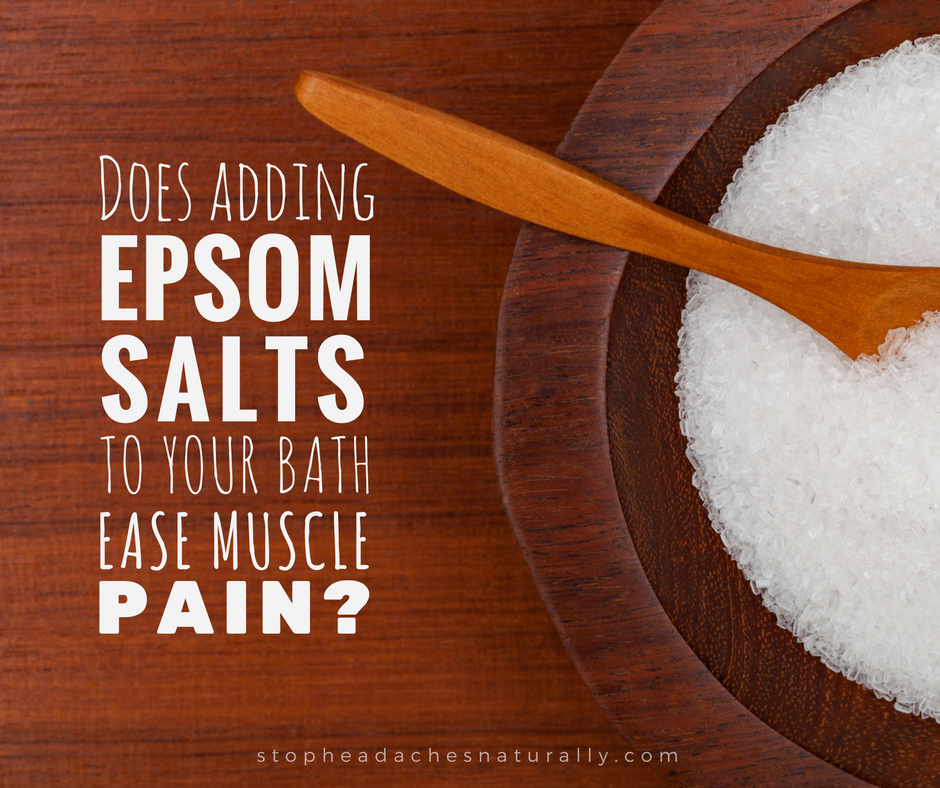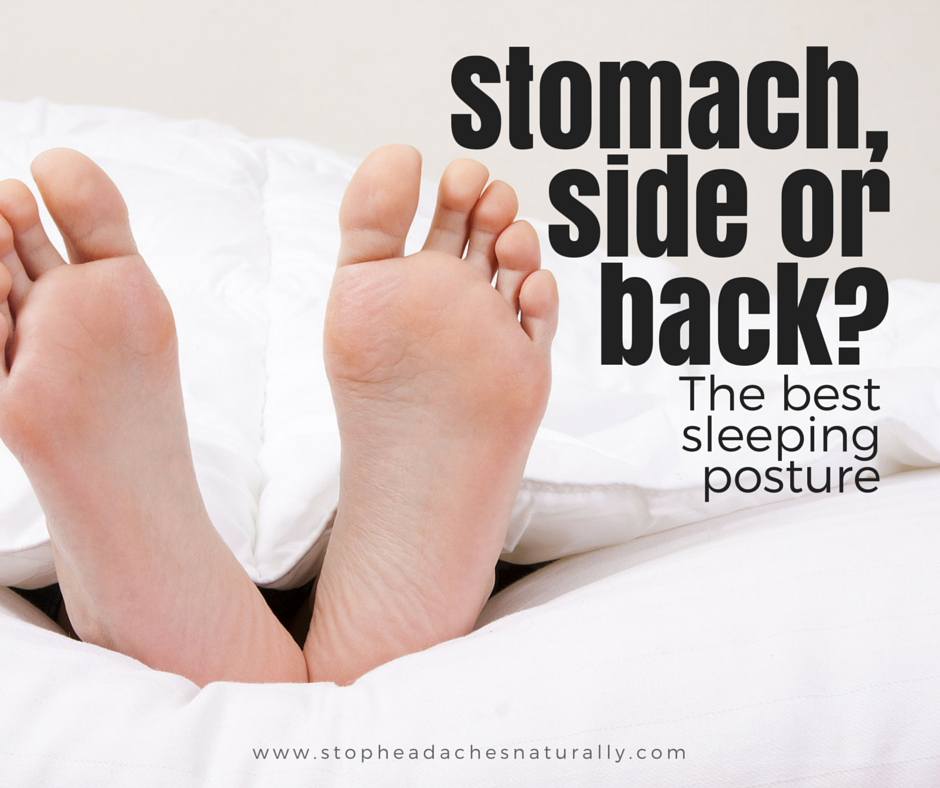Does Adding Epsom Salts To Your Bath Ease Muscle Pain?

Adding Epsom salts can make your bath more effective. This is an old home remedy for easing muscle pain which is still widely used today. It is not just an old wives’ tale – there are good reasons for thinking it will help your muscles and your headaches.
Epsom salts act as a source of magnesium ions. These play an essential role in body chemistry, including the maintenance of normal functioning of nerves and muscles.
"Epsom salts act as a source of magnesium ions… including the maintenance of normal functioning of nerves and muscles."
Many headache sufferers have lower than normal levels of magnesium ions in their blood and brain [5,6,7,8] and intravenous magnesium will often quickly relieve a headache attack.[8,9]
Magnesium ions can also enter the bloodstream by absorption across the skin [10,11]. A small study showed that soaking in an Epsom salt bath for 12 minutes two times a week should be sufficient to restore normal levels.[11] The effects on headaches have not been studied but it seems well worth trying.
"Many headache sufferers have lower than normal levels of magnesium."
You will need about 2 cups of Epsom salts in a standard sized bath tub.
If you suffer from migraines, you may have noticed that your hands and feet tend that tend to get colder before and during an attack.
For many people this is a reliable early warning sign.
A warm bath taken at this stage will help prevent the attack from progressing further by drawing blood away from your head towards your extremities.
This is an excerpt from the ebook Stop Headaches Naturally - Chapter 11.15 - Heat, Cold and other Therapies
References:
[5] P Sarchielli, G Coata, C Firenze, P Morucci, G Abbritti and V Gallai (1992). “Serum and salivary magnesium levels in migraine and tension-type headache. Results in a group of adult patients.” Cephalalgia 12(1): 21-27.
[6] BM Altura and BT Altura (1996). “Role of magnesium in patho-physiological processes and the clinical utility of magnesium ion selective electrodes.” Scand J Clin Lab Invest Suppl 224: 211-234.
[7] A Mauskop, BT Altura, RQ Cracco and BM Altura (1993). “Deficiency in serum ionized magnesium but not total magnesium in patients with migraines. Possible role of ICa2+/IMg2+ ratio.” Headache 33(3): 135-138.
[8] A Mauskop and BM Altura (1998). “Role of magnesium in the pathogenesis and treatment of migraines.” Clin Neurosci 5(1): 24-27.
[9] A Mauskop, BT Altura, RQ Cracco and BM Altura (1996). “Intravenous magnesium sulfate rapidly alleviates headaches of various types.” Headache 36(3): 154-160.
[10] H Laudańska, A Lemancewicz, M Kretowska, T Reduta and T Laudański (2002). “Permeability of human skin to selected anions and cations--in vitro studies.” Commun Mol Pathol Pharmacol 112(1-4): 16-26.
[11] Dr RH Waring (2009). “Report on Absorption of magnesium sulfate (Epsom salts) across the skin.”
What Is The Best Sleeping Posture?

We have all woken up with a stiff neck or sore back and immediately thought, “I must have slept the wrong way”.
Most people are aware that poor sleeping posture can cause neck, shoulder and back pain. However the important role that it can play in provoking headache attacks tends to go unrecognized.
Considering we spend almost a third of our life in bed, we ought to pay more attention to our sleeping posture. Perhaps you have an ergonomic chair at work but what about the mattress and pillow on your bed?
A good mattress and pillow can certainly help your sleeping posture. Mattresses and pillows also wear out and need to be replaced regularly.
However it is even more important to look at the way you lie in bed.
Although we change our position many times while we are asleep, we all have a favourite position. This is the position that we adopt automatically as we drift off to sleep, the one we continually return to during the night. Hence it is the position that we spend the most time in. Video studies have shown almost everyone is able to identify it reliably.[5b]
Do you prefer to sleep on your side, on your back or on your stomach? There is some disagreement among scientists and doctors as to whether sleeping on your side or your back is better for the spine.
However all are agreed that sleeping on your stomach is very bad for the spine and should be avoided.
Stopping sleeping on your stomach may be one of the most effective things you can do to stop your headaches. Just what it is wrong with sleeping on your stomach is discussed in the next section.
Having good sleeping posture means that when you are lying in bed in your usual position:
- Your pillow and mattress should support your head and body so that your spine retains its three natural curves, just as when you are sitting or standing.
- Your spine, and especially your neck (cervical spine), should not be twisted to one side – your shoulders and hip bones should be aligned.
The position of your arms and legs should not put any muscles in either an overly shortened or overstretched state. For example, avoid crossing your arms tightly against your chest as shown in the photo.
Awkward positions such as this, when held for hours on end during sleep, will cause or reactivate muscular trigger points and worsen existing muscle imbalances.
Our postural habits are so ingrained that we are mostly unaware of them. It is a good idea to demonstrate the way you usually lie when you go to sleep to your manual therapist and ask them to comment on any possible problem areas that they notice.
This is an excerpt from Stop Headaches Naturally | Chapter 8 - Postural Tips For Sleeping





